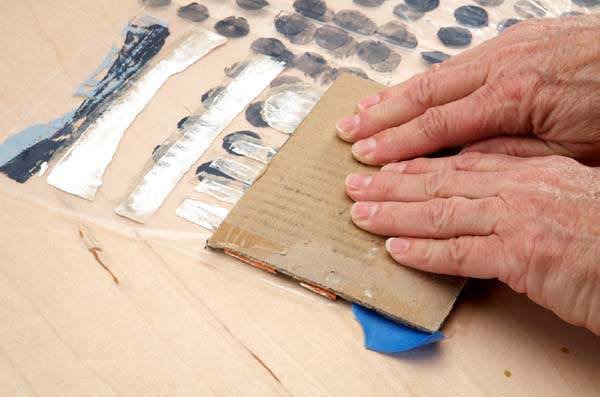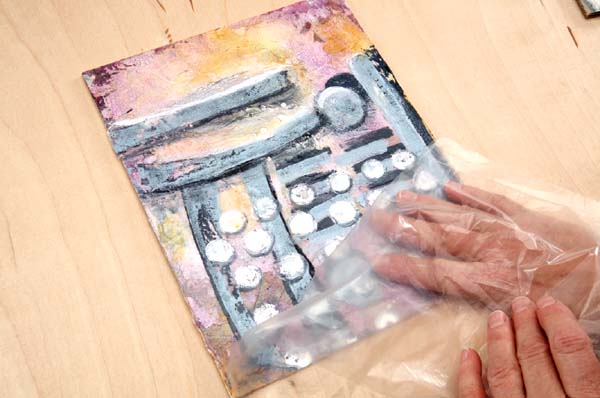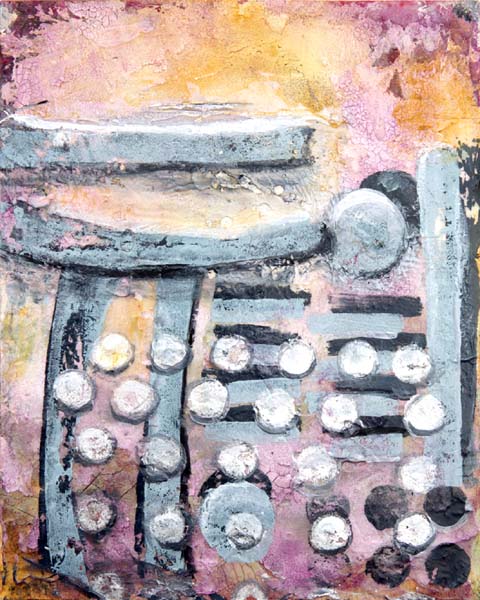Premonition
You have come to that proverbial fork in the road with your art and don’t know which way to go. These techniques allow you to see into the future and get a peek at what your painting can be. You may have an idea of where you are going or you may want to go in several directions. We have a solution for that also.
TECHNIQUE ONE: Parallel Universe
Copy your background. Make one a true copy and copy a second one so it is backwards. You can develop each piece separately or put them side by side to create a parallel composition.

PARALLEL UNIVERSE
Sandra Duran Wilson
TECHNIQUE TWO: Scan and Play
Scan or photograph the painting background, then bring it into a digital photo-editing program. Many smartphone cameras come with special effects programs. You can play with color, crop, rotate, soften or sharpen areas and even layer multiple times.
TECHNIQUE THREE: Low Tech
This is a very low tech but effective layering technique.

Step 1
First, put a little piece of masking tape on a corner of a piece of plastic—a plastic bag or piece of painter’s tarp works well. This will identify which side you are painting on. Sparingly stamp, paint or draw onto the piece of plastic. Let dry.

Step 2
Turn the plastic over. This allows you to see what the paint will look like once it’s transferred. Always paint on the same side of the plastic. Keep working and check your composition frequently.

Step 3
Once you are completely finished painting and the paint is dry, you can then transfer the paint from the plastic to a panel or canvas using the Crazy Easy Transfer method.

REFLECTIONS
Sandra Duran Wilson
TIPS
• Before you begin painting, put a little piece of masking tape on a corner of the plastic. This will help you identify which side you are painting on as you move back and forth between layering paint and checking your composition.
• If you want to know what a shape or color would look like in your composition before painting it in, cut out a shape from a magazine in the color you are considering and put it behind the plastic. You can move it around and change the size or color until you are satisfied. Then you can paint it into your work.
• When painting layers, leave some areas open so you can see through the layers. Your first layers should be very sparse. Build them up until you are satisfied with the look.
